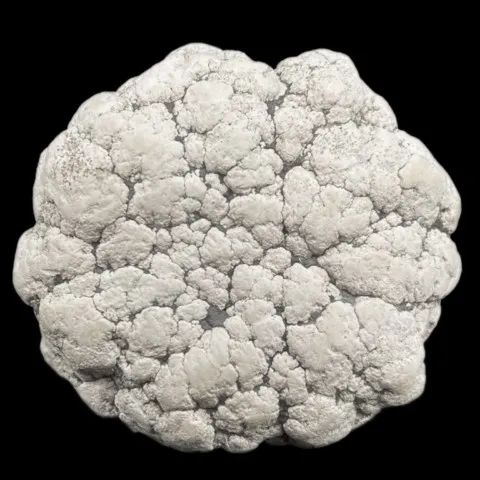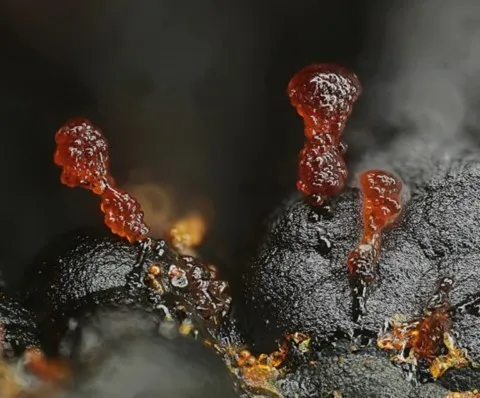DIADOCHITE
Class : Phosphates, arsenates, vanadates
Subclass : Hydrated phosphates
Crystal system : Triclinic
Chemistry : Fe2(PO4)(SO4)(OH) 5H2O
Rarity : Common
Diadochite (formerly called destinezite) is a complex hydrated phosphate which admits in its structure a certain number of SO4 groups to replace PO4 groups. It is a secondary mineral formed by degradation of primary phosphates, hence its name which comes from the Greek diadokhos (successor). It is found in varied environments : gossans, coal deposits, granite pegmatites but also, more anecdotally, on guano crusts in caves. Diadochite is a recently formed phosphate which sometimes appears in mine galleries. It accompanies a sometimes large procession of primary and secondary phosphates, and sulfates. Diadochite is rarely crystallized in six-sided lamellar microcrystals, more commonly in reniform, botryoidal or stalactitic aggregates, sometimes collomorphic. A mineral of sometimes current formation, its atoms have not always had time to organize themselves and diadochite is also commonly amorphous, in earthy or glassy masses. Its color is in different tones of brown, red-brown, yellow and orange, sometimes greenish-yellow.
Main photo : Diadochite from Old strip mine, Jackson Township, Coshocton County, Ohio, USA © Chris Emproto
Diadochite in the World
Twinning
No twin known for this mineral species.
Fakes and treatments
No fakes listed for this mineral species.
Hardness : 3 to 4
Density : 2.0 to 2.4
Fracture : Conchoidal to sub-conchoidal
Streak : Yellow to yellow-brown
TP : Transparent to opaque
RI : 1,600 to 1,670
Birefringence : 0.050 to 0.055
Optical character : Biaxial +
Pleochroism : None
Fluorescence : None
Solubility : Acids
Magnetism : None
Radioactivity : None


